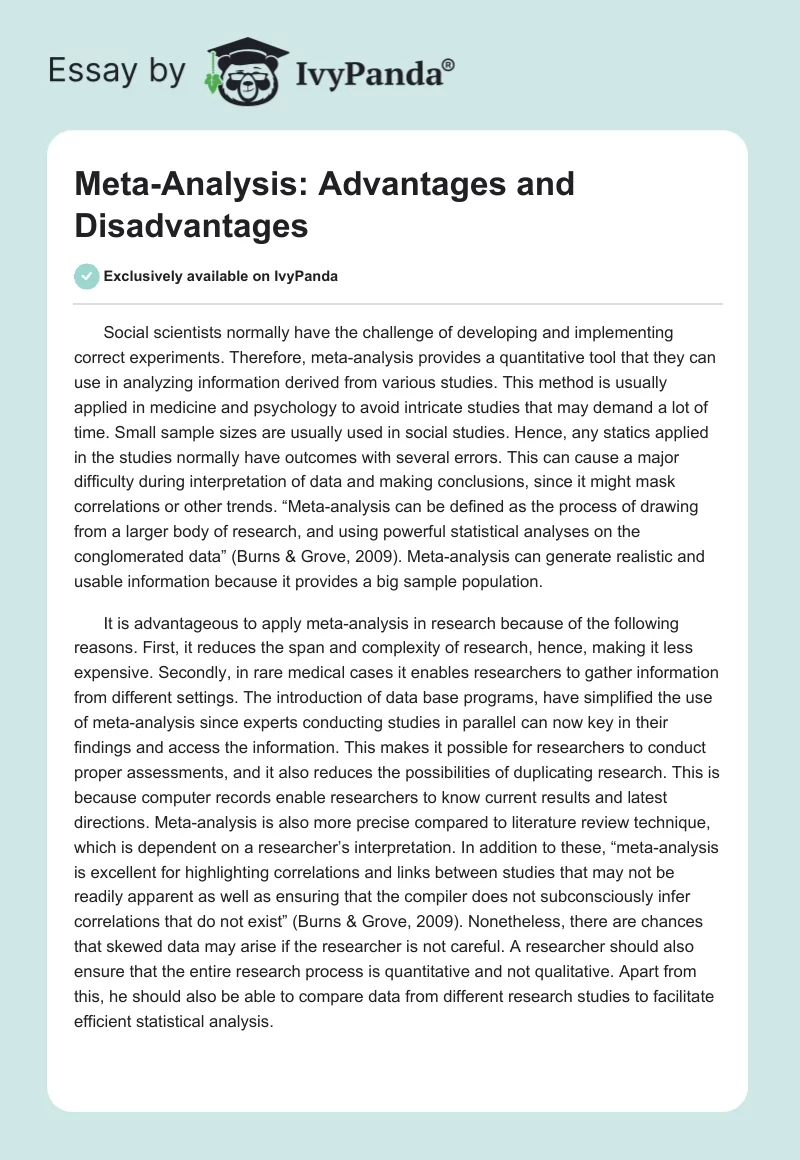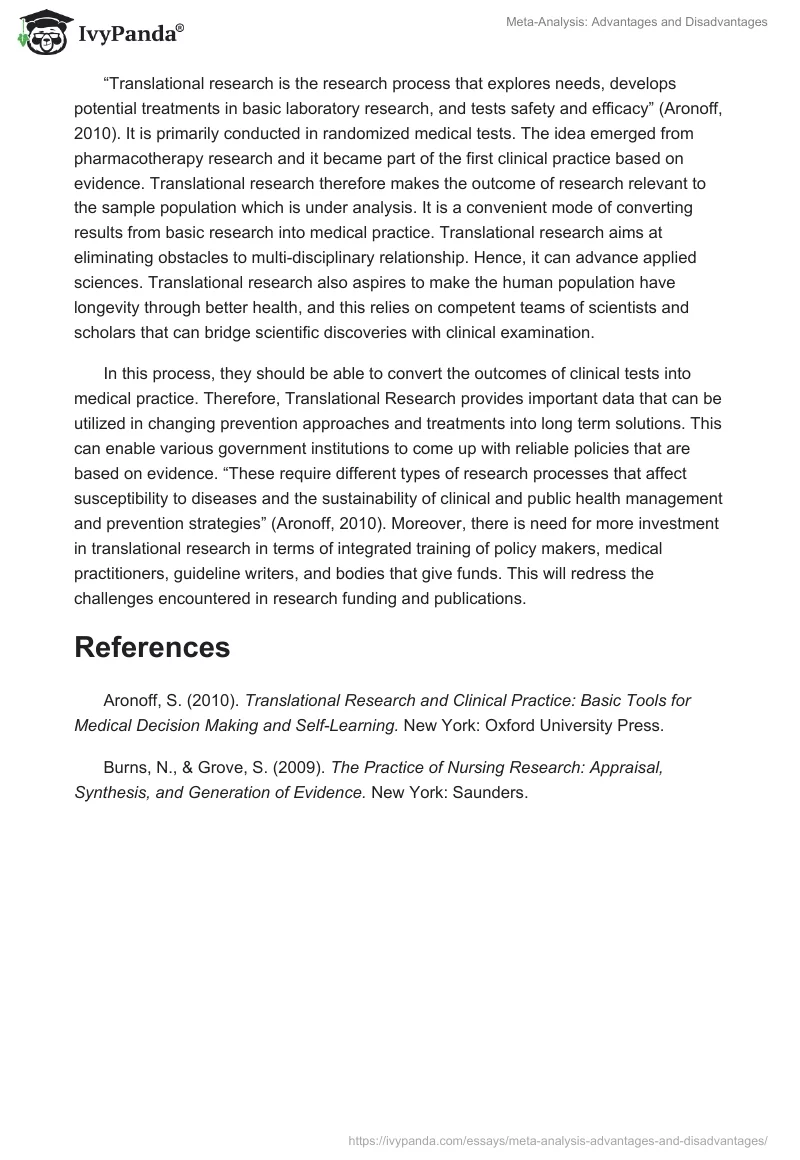Social scientists normally have the challenge of developing and implementing correct experiments. Therefore, meta-analysis provides a quantitative tool that they can use in analyzing information derived from various studies. This method is usually applied in medicine and psychology to avoid intricate studies that may demand a lot of time. Small sample sizes are usually used in social studies. Hence, any statics applied in the studies normally have outcomes with several errors. This can cause a major difficulty during interpretation of data and making conclusions, since it might mask correlations or other trends. “Meta-analysis can be defined as the process of drawing from a larger body of research, and using powerful statistical analyses on the conglomerated data” (Burns & Grove, 2009). Meta-analysis can generate realistic and usable information because it provides a big sample population.
It is advantageous to apply meta-analysis in research because of the following reasons. First, it reduces the span and complexity of research, hence, making it less expensive. Secondly, in rare medical cases it enables researchers to gather information from different settings. The introduction of data base programs, have simplified the use of meta-analysis since experts conducting studies in parallel can now key in their findings and access the information. This makes it possible for researchers to conduct proper assessments, and it also reduces the possibilities of duplicating research. This is because computer records enable researchers to know current results and latest directions. Meta-analysis is also more precise compared to literature review technique, which is dependent on a researcher’s interpretation. In addition to these, “meta-analysis is excellent for highlighting correlations and links between studies that may not be readily apparent as well as ensuring that the compiler does not subconsciously infer correlations that do not exist” (Burns & Grove, 2009). Nonetheless, there are chances that skewed data may arise if the researcher is not careful. A researcher should also ensure that the entire research process is quantitative and not qualitative. Apart from this, he should also be able to compare data from different research studies to facilitate efficient statistical analysis.
“Translational research is the research process that explores needs, develops potential treatments in basic laboratory research, and tests safety and efficacy” (Aronoff, 2010). It is primarily conducted in randomized medical tests. The idea emerged from pharmacotherapy research and it became part of the first clinical practice based on evidence. Translational research therefore makes the outcome of research relevant to the sample population which is under analysis. It is a convenient mode of converting results from basic research into medical practice. Translational research aims at eliminating obstacles to multi-disciplinary relationship. Hence, it can advance applied sciences. Translational research also aspires to make the human population have longevity through better health, and this relies on competent teams of scientists and scholars that can bridge scientific discoveries with clinical examination.
In this process, they should be able to convert the outcomes of clinical tests into medical practice. Therefore, Translational Research provides important data that can be utilized in changing prevention approaches and treatments into long term solutions. This can enable various government institutions to come up with reliable policies that are based on evidence. “These require different types of research processes that affect susceptibility to diseases and the sustainability of clinical and public health management and prevention strategies” (Aronoff, 2010). Moreover, there is need for more investment in translational research in terms of integrated training of policy makers, medical practitioners, guideline writers, and bodies that give funds. This will redress the challenges encountered in research funding and publications.
References
Aronoff, S. (2010). Translational Research and Clinical Practice: Basic Tools for Medical Decision Making and Self-Learning. New York: Oxford University Press.
Burns, N., & Grove, S. (2009). The Practice of Nursing Research: Appraisal, Synthesis, and Generation of Evidence. New York: Saunders.


